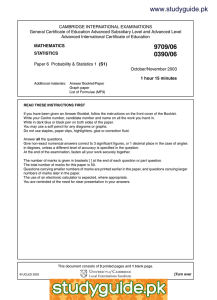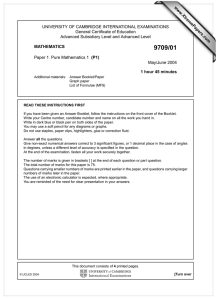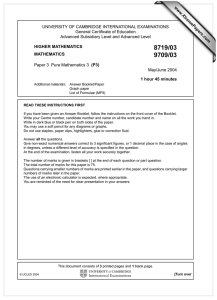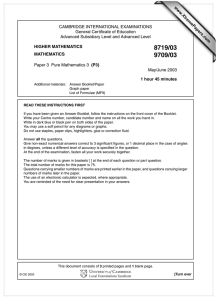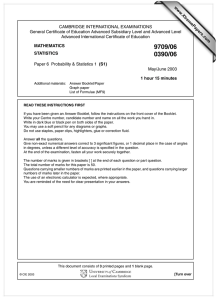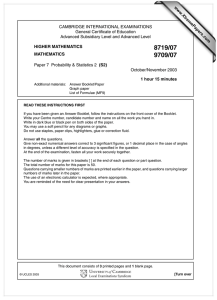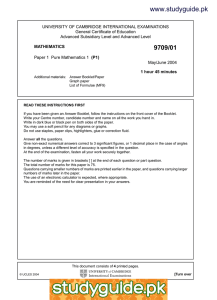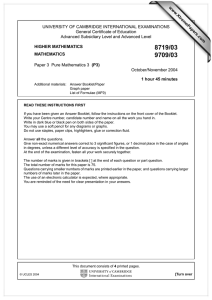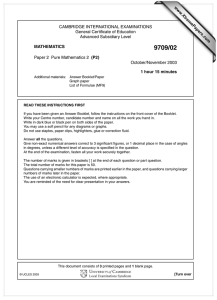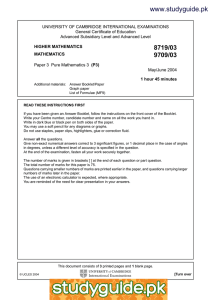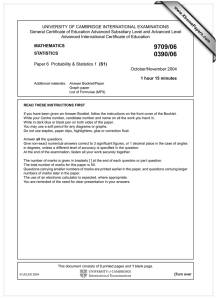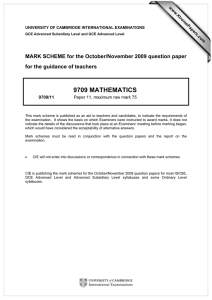www.XtremePapers.com
advertisement
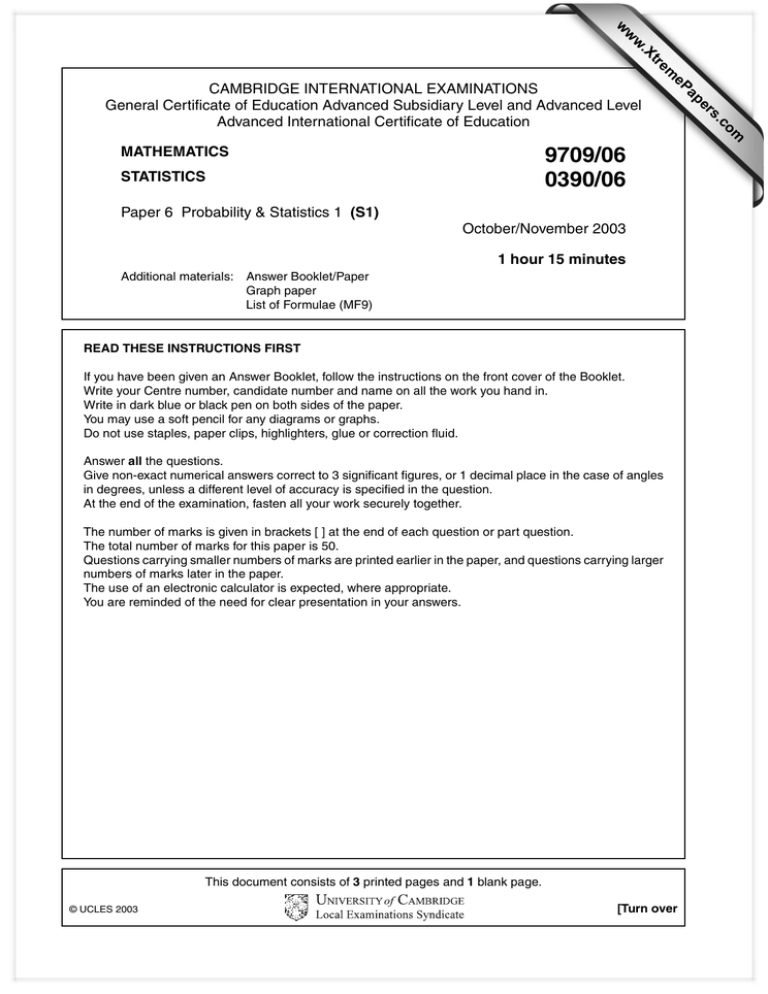
w w STATISTICS Paper 6 Probability & Statistics 1 (S1) October/November 2003 1 hour 15 minutes Additional materials: Answer Booklet/Paper Graph paper List of Formulae (MF9) READ THESE INSTRUCTIONS FIRST If you have been given an Answer Booklet, follow the instructions on the front cover of the Booklet. Write your Centre number, candidate number and name on all the work you hand in. Write in dark blue or black pen on both sides of the paper. You may use a soft pencil for any diagrams or graphs. Do not use staples, paper clips, highlighters, glue or correction fluid. Answer all the questions. Give non-exact numerical answers correct to 3 significant figures, or 1 decimal place in the case of angles in degrees, unless a different level of accuracy is specified in the question. At the end of the examination, fasten all your work securely together. The number of marks is given in brackets [ ] at the end of each question or part question. The total number of marks for this paper is 50. Questions carrying smaller numbers of marks are printed earlier in the paper, and questions carrying larger numbers of marks later in the paper. The use of an electronic calculator is expected, where appropriate. You are reminded of the need for clear presentation in your answers. This document consists of 3 printed pages and 1 blank page. © UCLES 2003 [Turn over om .c 9709/06 0390/06 s er MATHEMATICS ap eP m e tr .X w CAMBRIDGE INTERNATIONAL EXAMINATIONS General Certificate of Education Advanced Subsidiary Level and Advanced Level Advanced International Certificate of Education 2 1 A computer can generate random numbers which are either 0 or 2. On a particular occasion, it generates a set of numbers which consists of 23 zeros and 17 twos. Find the mean and variance of this set of 40 numbers. [4] 2 The floor areas, x m2 , of 20 factories are as follows. 150 1000 350 1330 450 1533 578 1561 595 1778 644 1960 722 2167 798 2330 802 2433 904 3231 Represent these data by a histogram on graph paper, using intervals 0 ≤ x < 500, 500 ≤ x < 1000, 1000 ≤ x < 2000, 2000 ≤ x < 3000, 3000 ≤ x < 4000. [4] 3 In a normal distribution, 69% of the distribution is less than 28 and 90% is less than 35. Find the mean and standard deviation of the distribution. [6] 4 Single cards, chosen at random, are given away with bars of chocolate. Each card shows a picture of one of 20 different football players. Richard needs just one picture to complete his collection. He buys 5 bars of chocolate and looks at all the pictures. Find the probability that (i) Richard does not complete his collection, [2] (ii) he has the required picture exactly once, [2] (iii) he completes his collection with the third picture he looks at. [2] 5 In a certain country 54% of the population is male. It is known that 5% of the males are colour-blind and 2% of the females are colour-blind. A person is chosen at random and found to be colour-blind. By drawing a tree diagram, or otherwise, find the probability that this person is male. [6] 6 (a) A collection of 18 books contains one Harry Potter book. Linda is going to choose 6 of these books to take on holiday. (i) In how many ways can she choose 6 books? [1] (ii) How many of these choices will include the Harry Potter book? [2] (b) In how many ways can 5 boys and 3 girls stand in a straight line (i) if there are no restrictions, [1] (ii) if the boys stand next to each other? [4] 9709/06/O/N/03 3 7 The length of time a person undergoing a routine operation stays in hospital can be modelled by a normal distribution with mean 7.8 days and standard deviation 2.8 days. (i) Calculate the proportion of people who spend between 7.8 days and 11.0 days in hospital. [4] (ii) Calculate the probability that, of 3 people selected at random, exactly 2 spend longer than 11.0 days in hospital. [2] (iii) A health worker plotted a box-and-whisker plot of the times that 100 patients, chosen randomly, stayed in hospital. The result is shown below. State with a reason whether or not this agrees with the model used in parts (i) and (ii). 8 [2] A discrete random variable X has the following probability distribution. x 1 2 3 4 P(X = x) 3c 4c 5c 6c (i) Find the value of the constant c. [2] (ii) Find E(X ) and Var(X ). [4] (iii) Find PX > E(X ). [2] 9709/06/O/N/03 4 BLANK PAGE 9709/06/O/N/03
